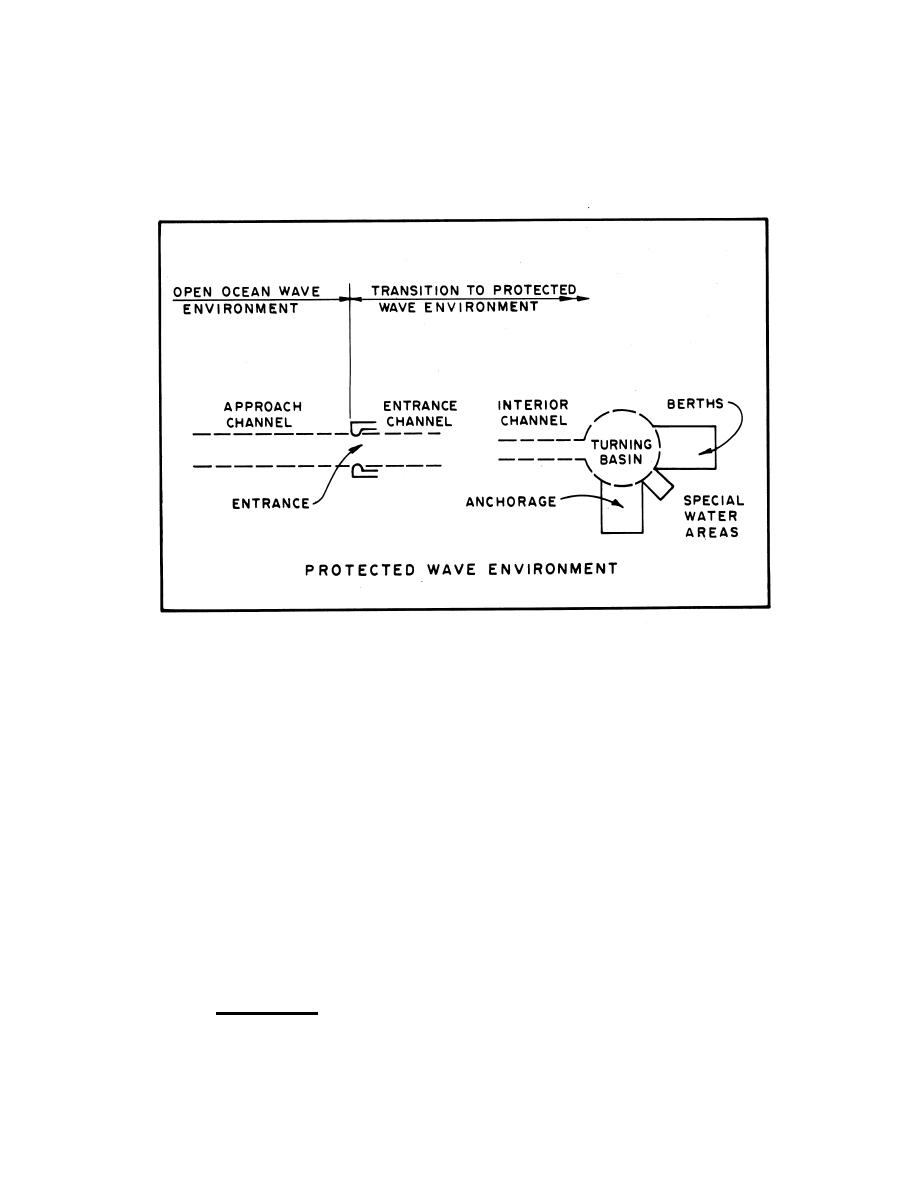
UFC 4-150-06
12 December 2001
are required for vessel electronic and navigation calibration. Sizing of water-area
dimensions is related to both capacity and operational requirements.
Figure 5-1 Water-Area Elements
5-6.1.1.2
Capacity. Ascertain the approximate anticipated capacity requirement
from the using agency in terms of numbers, types, and sizes of vessels expected to
simultaneously anchor within the harbor limits. Also estimate the number of these
vessels that must be simultaneously accommodated at pier or wharf berths and
determine the needs for special water areas for ship calibration.
5-6.1.1.3
Operation. Proposed vessel-handling methods and navigational
minimums need to be defined. Included in this assessment is the use of pilots and tugs
for ship handling and berthing. Tolerances for ship movement restrictions in cases of
extreme tide or weather conditions need to be defined.
5-6.1.1.4
Dimensioning. Guidelines for dimensioning harbor water-area elements,
and spatial and water-depth values are provided below. Alternative evaluations may be
made through comparison using existing operating Navy facilities. However, caution
should be exercised in making such operational comparisons in that, to do so, the wind,
wave, and current environments must also be similar.
Water Areas. The water-area elements of harbors schematized in Figure
5-1 are composed of channels for vessel transit and basins for vessel
maneuvering, berthing, and anchorage.
5-9



 Previous Page
Previous Page
